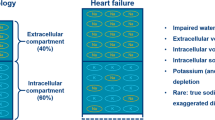Abstract
The amino acids glycine and glutamine have been implicated in myocardial protection of the much studied young adult heart. This study aimed to determine whether such protection could be enhanced using the dipeptide, l-glycyl-l-glutamine (gly-gln) in both young hearts and in middle-aged hearts representative of a more clinically relevant age group. Hearts from 8-week-old and 36-week-old rats were perfused in the Langendorff mode for 20 min, before 40 min global normothermic ischaemia and 30 min reperfusion. Where present, 0.5, 2, or 5 mM gly-gln was added 10 min into baseline perfusion, was present throughout ischaemia and was washed out after 10 min reperfusion. Reperfusion damage was assessed from the release of lactate dehydrogenase. Metabolic fitness was assessed from the time to ischaemic contracture and the accumulation of lactate and thiobarbituric acid reactive substances during ischaemia. The presence of 5 mM gly-gln significantly improved the post-ischaemic rate pressure product (RPP) and decreased reperfusion damage in both the 8 (RPP in control on reperfusion 5527 ± 957 vs. 10,320 ± 795 mmHg beat min−1 in 5 mM gly-gln, n = 6 ± SE, p < 0.05) and 36-week-old (RPP in control on reperfusion 1964.33 ± 876.3 vs. 4008 ± 675 mmHg beat min−1, n = 6 ± SE, p < 0.01) hearts. Five mM gly-gln also increased the time to ischaemic contracture and was able to protect against the rise in lactate that occurred in the controls during ischaemia. These results suggest that gly-gln has good potential as a combatant against ischaemia–reperfusion injury in both the young adult and middle-aged populations.








Similar content being viewed by others
References
Andreadou I, Iliodromitis EK, Farmakis D, Kremastinos DT (2009) To prevent, protect and save the ischemic heart: antioxidants revisited. Expert Opin Ther Targets 13:945–956
Bolotin G, Raman J, Williams U, Bacha E, Kocherginsky M, Jeevanandam V (2007) Glutamine improves myocardial function following ischemia-reperfusion injury. Asian Cardiovasc Thorac Ann 15:463–467
Broer S (2014) The SLC38 family of sodium-amino acid transporters. Pflügers Arch 466:155–172
Halestrap AP, Pasdois P (2009) The role of the mitochondrial permeability transition pore in heart disease. Biochim Biophys Acta Bioenerg 1787:1402–1415
Jahangir A, Sagar S, Terzic A (2007) Aging and cardioprotection. J Appl Physiol 103:2120–2128
Jiang L, Qin X, Zhong X, Liu L, Jiang L, Lu Y, Fan L, He Z, Chen Q (2011) Glycine-induced cytoprotection is mediated by ERK1/2 and AKT in renal cells with ATP depletion. Eur J Cell Biol 90:333–341
Khogali SE, Harper AA, Lyall JA, Rennie MJ (1998) Effects of l-glutamine on post-ischaemic cardiac function: protection and rescue. J Mol Cell Cardiol 30(4):819–827
King N, Lin H, McGivan JD, Suleiman M-S (2004) Aspartate transporter activity in hypertrophic rat heart and ischaemia-reperfusion injury. J Physiol 556:849–858
King N, Lin H, McGivan JD, Suleiman M-S (2006) Glutamate transporter activity in hypertrophic rat heart and ischaemia-reperfusion injury. Pflügers Arch 452:674–682
King N, Lin H, Suleiman M-S (2011) Oxidative stress increases SNAT1 expression and stimulates cysteine uptake in freshly isolated rat cardiomyocytes. Amino Acids 40:517–526
Lin H, King N (2007) Demonstration of functional dipeptide uptake into freshly isolated guinea-pig cardiomyocytes. Pflügers Arch 453:915–922
Liu J, Marchase RB, Chatham JC (2007) Glutamine-induced protection of isolated rat heart from ischemia/reperfusion injury is mediated via the hexosamine biosynthesis pathway and increased protein O-GlcNAc levels. J Mol Cell Cardiol 42:177–185
McGuinness J, Neilan TG, Cummins R, Sharkasi A, Bouchier-Hayes D, Redmond JM (2009) Intravenous glutamine enhances COX-2 activity giving cardioprotection. J Surg Res 152:140–147
Nadtochiy SM, Burwell LS, Ingraham CA, Spencer CM, Friedman AE, Pinkert CA, Brookes PS (2009) In vivo cardioprotection by S-nitroso-2-mercaptopropionyl glycine. J Mol Cell Cardiol 46(6):960–968
Pantos C, Mourouzis I, Cokkinos DV (2007) Protection of the abnormal heart. Heart Fail Rev 12:319–330
Qi R-B, Xiong Y, Lu D-X, Wang Y-P, Fu Y-M (2009) Protection of glycyl-l-glutamine against myocardial ischemia reperfusion injury in the isolated rat heart. Chin J Pathophysiol 25:853–858
Ruiz-Meana M, Pina P, Garcia-Dorado D, Rodriguez-Sinovas A, Barba I, Miro-Casas E, Mirabet M, Soler-Soler J (2004) Glycine protects cardiomyocytes against lethal reoxygenation injury by inhibiting mitochondrial permeability transition. J Physiol 558:873–882
Schaffer SW, Jong CJ, Ito T, Azuma J (2014) Effect of taurine on ischemia-reperfusion injury. Amino Acids 46:21–30
Shackebaei D, King N, Shukla B, Suleiman M-S (2015) Mechanisms underlying the cardioprotective effects of l-cysteine. Mol Cell Biochem 177:27–31
Smith DE, Clemencou B, Hediger MA (2013) Proton-coupled oligopeptide transporter family SLC15: physiological pharmacological and pathological implications. Mol Aspects Med 34:323–336
Song JX, Tu XH, Wang L, Li CJ (2004) Glutamine dipeptide-supplemented parenteral nutrition in patients with colorectal cancer. Clin Nutr 1:49–53
Støttrup NB, Kristiansen SB, Løfgren B, Hansen BF, Kimose HH, Bøtker HE, Nielsen TT (2006) l-Glutamate and Glutamine improve haemodynamic function and restore myocardial Glycogen content during postischaemic reperfusion: a radioactive tracer study in the rat isolated heart. Clin Exp Pharmacol Physiol 33:1099–1103
Zhang Y, Yan H, Lv S-G, Wang L, Liang G-P, Wan Q-X, Peng X (2013) Effects of glycyl-l-glutamine dipeptide supplementation on myocardial damage and cardiac function in rats after severe burn injury. Int J Clin Exp Pathol 6:821–830
Acknowledgments
This work was supported by the University of New England. We would also like to thank the technical staff for their excellent assistance.
Conflict of interest
The authors declare that they have no conflict of interest.
Author information
Authors and Affiliations
Corresponding author
Additional information
Handling Editor: F. Galli.
Rights and permissions
About this article
Cite this article
Almashhadany, A., Alghamdi, O.A., Van der Touw, T. et al. l-Glycyl-l-glutamine provides the isolated and perfused young and middle-aged rat heart protection against ischaemia–reperfusion injury. Amino Acids 47, 1559–1565 (2015). https://doi.org/10.1007/s00726-015-1997-y
Received:
Accepted:
Published:
Issue Date:
DOI: https://doi.org/10.1007/s00726-015-1997-y




